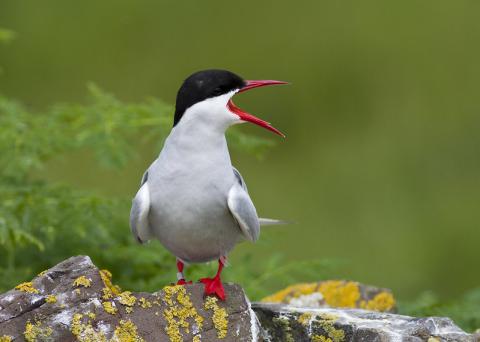
- Climate change is one of the primary causes of declines in UK seabird populations. Over a third of species assessed in the UK showed declines of 20% or more in breeding abundance since the 1990s.
- Climate change has an impact on seabirds indirectly, by driving changes in the availability of small fish that many seabirds rely on for food.
Medium evidence, medium agreement
There is broad consensus on the current effects of climate change on UK seabird populations, but there is a lack of precise, mechanistic understanding of how climate affects seabirds and the interplay between climate and other factors. Evidence is mostly limited to effects on seabirds during the breeding season.
- Some seabirds, for example Leach’s storm petrel, great skua and Arctic skua, may become extinct in the UK by 2100, while the ranges of black-legged kittiwake, Arctic tern and auks may shrink significantly northwards.
- Direct impacts from changes in severe weather events and sea-level rise may increase in the future. For example, rising sea levels in the southern North Sea may have an impact on ground-nesting seabirds such as terns, which nest just above the high-water mark.
Low evidence, low agreement
Predictive studies are becoming more common, but results show high uncertainty and are dependent on choice of climate scenario. Furthermore, model projections on frequency or severity of extreme storm events remain limited, impairing our ability to predict future changes in seabird populations affected by weather.
- Exploring interactions between climate change and anthropogenic drivers affecting seabirds, such as fisheries, pollutants, disease, and marine renewables.
- Increasing data collection on the effects of climate change on principal prey species of seabirds.
- Testing whether climate change (e.g., temperature, extreme weather) can cause selection and rapid ‘evolutionary rescue’, enabling seabird populations to adapt to climate change.
- Understanding cumulative impacts of climate change and environmental pollution on seabirds (e.g., legacy & emerging contaminants, plastics).
- Understanding how policy driven expansions in marine renewables may impact seabirds through collision and population displacement.